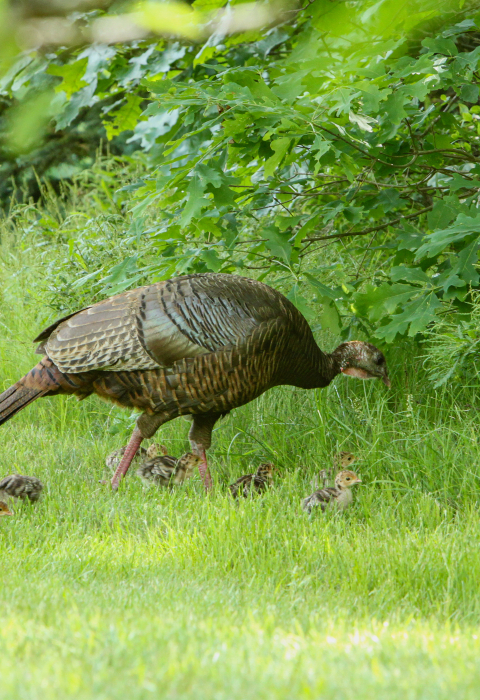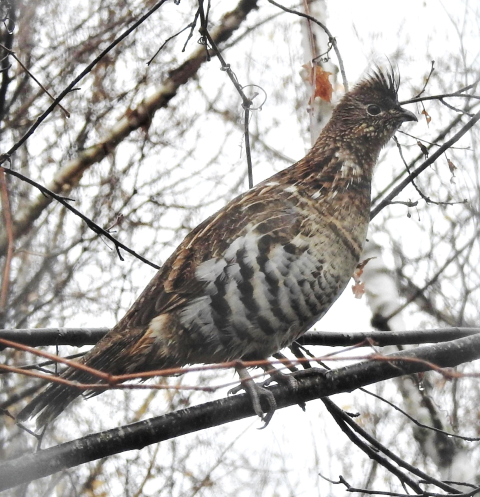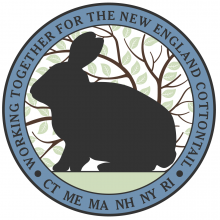Hunting Club Project
In 2014, the Old Newgate Coon Club launched a project to help New England cottontails by harvesting timber on 21 acres so that dense small trees would grow back and create the thick cover those rare regional rabbits need. The project included building three brush piles per acre, hiding sites that cottontails quickly dart into when threatened by predators. (Plenty of other wildlife use brush piles, too.)
A Venerable Tradition
Organized in 1897, the Old Newgate Coon Club is the oldest continuously active hunting club in Connecticut. The club’s 613 acres are managed to benefit wildlife and provide a variety of hunting experiences.
More recent habitat work started in 2017 on 9 additional acres, as trees larger than 2 inches in diameter were removed, stimulating the growth of aspen, birch, ash, red maple, and red oak saplings and seedlings. During cutting, plenty of woody debris – limbs and small portions of tree trunks – were left on the ground to rot and release nutrients back into the soil.
Said club president John Parshley: “The projects not only improve habitat for our members to enjoy, but they also involve the club in important state and regional conservation efforts.”
More Wildlife to Enjoy
Club members hear songbirds that need young forest, including eastern towhees; catbirds; indigo buntings; eastern kingbirds; and blue-winged, chestnut-sided, and prairie warblers. And they find greater opportunities to hunt game species such as ruffed grouse and wild turkey that also need young forest and shrubland.




